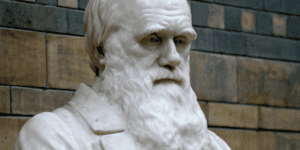
Theology of Mythology: Of God and gods, Angels and Demons
The people of ancient Palestine in Israel and Judea saw angels in anthropomorphic form, and they encountered demons inhabiting humans and animals. The angels (or even the Trinity) could eat at their table, unlock gates and move stones.

by W. Curt LaFrance Jr., MD, MPH
“You shall have no other gods before me” (Exodus 20:3).
The people of ancient Palestine in Israel and Judea saw angels in anthropomorphic form, and they encountered demons inhabiting humans and animals. The angels (or even the Trinity) could eat at their table, unlock gates and move stones. The demons could cause convulsions and make swine swim (to their death). The thesis of this piece is that gods (with a little g) are real. The supports for this position are drawn not from mythology, rather from the Bible itself. Scripture refers to God being above other gods, not an absence of gods.
“For the Lord is the great God, the great King above all gods” (Psalms 95:3).
To begin, Christians have always readily accepted the reality and existence of spiritual beings. Numerous biblical references include Old and New Testament accounts of humans encountering angels in human form, where the angels interact with the physical world:
“The Lord appeared to Abraham near the great trees of Mamre while he was sitting at the entrance to his tent in the heat of the day. Abraham looked up and saw three men standing nearby. When he saw them, he hurried from the entrance of his tent to meet them and bowed low to the ground. He said, ‘If I have found favor in your eyes, my lord, do not pass your servant by. Let a little water be brought, and then you may all wash your feet and rest under this tree. Let me get you something to eat, so you can be refreshed and then go on your way—now that you have come to your servant.’ ‘Very well,’ they answered, ‘do as you say.’ So Abraham hurried into the tent to Sarah. ‘Quick,’ he said, ‘get three seahs of the finest flour and knead it and bake some bread.’ Then he ran to the herd and selected a choice, tender calf and gave it to a servant, who hurried to prepare it. He then brought some curds and milk and the calf that had been prepared, and set these before them. While they ate, he stood near them under a tree” (Genesis 18:1-8).
New Testament depictions of human-angel interactions include, among others, Peter’s incarceration:
“Then Peter came to himself and said, ‘Now I know without a doubt that the Lord has sent his angel and rescued me from Herod’s clutches and from everything the Jewish people were hoping would happen’” (Acts 12:11).
And at the site of Jesus’ resurrection:
“But when they looked up, they saw that the stone, which was very large, had been rolled away. As they entered the tomb, they saw a young man dressed in a white robe sitting on the right side, and they were alarmed. ‘Don’t be alarmed,’ he said. ‘You are looking for Jesus the Nazarene, who was crucified. He has risen! He is not here. See the place where they laid him. But go, tell his disciples and Peter, “He is going ahead of you into Galilee. There you will see him, just as he told you.’’’ Trembling and bewildered, the women went out and fled from the tomb. They said nothing to anyone, because they were afraid” (Mark 16:4-8).
Moreover, demons were documented to have inhabited not only humans, but also animals, as depicted in Matthew 8:28-33.
Some maladies were attributed to demons inhabiting and afflicting humans:
“When they came to the crowd, a man approached Jesus and knelt before him. ‘Lord, have mercy on my son,’ he said. ‘He has seizures and is suffering greatly. He often falls into the fire or into the water. I brought him to your disciples, but they could not heal him.’ ‘You unbelieving and perverse generation,’ Jesus replied, ‘how long shall I stay with you? How long shall I put up with you? Bring the boy here to me.’ Jesus rebuked the demon, and it came out of the boy, and he was healed at that moment” (Matthew 17:14-18).
If ancient Christ-followers and modern Christians believe in the spiritual manifestations of God, angels and demons, why do we dismiss the ancient Greeks and Romans as seeing and interacting with their gods and their miraculous works?
Two books I grew up reading were the Bible and Greek Myths. As a boy and even as an adult, I had no qualms with accepting the existence of God, angels and demons. In contrast, a mythological story of the character Zeus taking the form of a swan to interact with the character Leda was noted as a reflection of a simple-minded people trying to explain nature in the absence of scientific knowledge. As argued below, the people of ancient Greece and Rome were far from simple-minded, and we expose a modernist’s logical fallacy by accepting one premise (biblical angels and demons), while rejecting the other (mythological gods). The way to reconcile the Bible and myths is by addressing the uncomfortable and seemingly irrational question: Could it be that Zeus, or Jupiter as he was known by the Romans (as ruler of the Greek and Roman gods), was Satan (or other demon(s)) manifesting himself to the men and women of ages past? Perhaps the Pantheon and minor gods are his demons (other fallen angels), appearing to humanity, which were expressed in the ancient pagan worship of spiritual beings?
Again, referencing from Scripture—and notably, not from D’Aulaires’ Book of Greek Myths, Homer’s Iliad and Odyssey or Virgil’s Aeneid—Christian New Testament writing addresses the pagan religion of god-worship and the Satanic ties. In the book of Revelation, John writes to the Church in Pergamum, where the Altar of Zeus (of note, taken by the Nazis to Berlin, Germany) was used for sacrifices:
“To the angel of the church in Pergamum write: These are the words of him who has the sharp, double-edged sword. I know where you live—where Satan has his throne. Yet you remain true to my name. You did not renounce your faith in me, not even in the days of Antipas, my faithful witness, who was put to death in your city—where Satan lives” (Revelation 2:12-13).
The Old Testament writers are clear on the demon-presence in the false gods of their day:
“But Jeshurun grew fat, and kicked; you grew fat, stout, and sleek; then he forsook God who made him and scoffed at the Rock of his salvation. They stirred him to jealousy with strange gods; with abominations they provoked him to anger. They sacrificed to demons that were no gods, to gods they had never known, to new gods that had come recently, whom your fathers had never dreaded. You were unmindful of the Rock that bore you, and you forgot the God who gave you birth” (Deuteronomy 32:15-18, ESV).
This begs the question, if we assert that their gods were “not real,” why do Yahweh, David and Paul all acknowledge their existence, as relayed in the Bible?
When Paul and Barnabas were confused for gods, their refutation was not “silly people, there are no gods,” rather, “we are human, not those gods you say we are.”
“In Lystra there sat a man who was lame. He had been that way from birth and had never walked. He listened to Paul as he was speaking. Paul looked directly at him, saw that he had faith to be healed and called out, ‘Stand up on your feet!’ At that, the man jumped up and began to walk. When the crowd saw what Paul had done, they shouted in the Lycaonian language, ‘The gods have come down to us in human form!’ Barnabas they called Zeus, and Paul they called Hermes because he was the chief speaker. The priest of Zeus, whose temple was just outside the city, brought bulls and wreaths to the city gates because he and the crowd wanted to offer sacrifices to them. But when the apostles Barnabas and Paul heard of this, they tore their clothes and rushed out into the crowd, shouting: ‘Friends, why are you doing this? We too are only human, like you. We are bringing you good news, telling you to turn from these worthless things to the living God, who made the heavens and the earth and the sea and everything in them’” (Acts 14:8-15).
When traveling through Anatolia/Asia Minor, Greece and Rome, it is readily apparent the ancients were not ignorant or “primitive.” Their architecture and artistry surpass any of the works of the “modern age.” Their ability to observe, reason and think without the tools (required) of modernity, makes many in our intelligentsia seem limited in cognitive abilities.
Paul engages the greatest thinkers of Athens, identifying the polytheism of the Greeks, and even referencing them:
“While Paul was waiting for them in Athens, he was greatly distressed to see that the city was full of idols. So he reasoned in the synagogue with both Jews and God-fearing Greeks, as well as in the marketplace day by day with those who happened to be there. A group of Epicurean and Stoic philosophers began to debate with him. Some of them asked, ‘What is this babbler trying to say?’ Others remarked, ‘He seems to be advocating foreign gods.’ They said this because Paul was preaching the good news about Jesus and the resurrection. Then they took him and brought him to a meeting of the Areopagus, where they said to him, ‘May we know what this new teaching is that you are presenting?’…Paul then stood up in the meeting of the Areopagus and said: ‘People of Athens! I see that in every way you are very religious. For as I walked around and looked carefully at your objects of worship, I even found an altar with this inscription: to an unknown god. So you are ignorant of the very thing you worship—and this is what I am going to proclaim to you’” (Acts 17:16-19, 22-23).
References in the Old Testament to other gods occur both with David and even Yahweh.
When David spared King Saul’s life, he shared what apostate people told him to do:
“Now let my lord the king listen to his servant’s words. If the Lord has incited you against me, then may he accept an offering. If, however, people have done it, may they be cursed before the Lord! They have driven me today from my share in the Lord’s inheritance and have said, ‘Go, serve other
gods’” (1 Samuel 26:19).
And finally, when Yahweh provided the first commandment to Moses, for the people of Israel, even Elohenu (God) acknowledged other gods:
“I am the Lord your God, who brought you out of Egypt, out of the land of slavery. You shall have no other gods before me. You shall not make for yourself an image in the form of anything in heaven above or on the earth beneath or in the waters below. You shall not bow down to them or worship them; for I, the Lord your God, am a jealous God…” (Exodus 20:2-5a).
Moreover, the purpose of the plagues was not a punishment of Pharaoh. God could have taken Egypt’s ruler out at any point. The purpose of the plagues was to show that the God of the enslaved Israelites was the Judge of all gods.
“Eat it in haste; it is the Lord’s Passover. On that same night I will pass through Egypt and strike down every firstborn of both people and animals, and I will bring judgment on all the gods of Egypt. I am the Lord. The blood will be a sign for you on the houses where you are, and when I see the blood, I will pass over you. No destructive plague will touch you when I strike Egypt” (Exodus 12:11b-13).
Scripture and archeology confirm that God exists, and that there are gods (demonic manifestations of so-called deities). These deities reflect their inherent nature. God’s character of goodness, wholeness and justice is just as consistent for Him, as with what a diabolical character of gods are. Anna Edmonds writes, “The [pagan] gods had little connection with morality: they were licentious, deceitful, quarrelsome and fickle.”[1] We would not hesitate to call a person of that ilk, “a little devil.”
Acknowledging the reality and presence of the Pantheon of the ancients does not draw us away from the one, true God (who is identified in the fourth century Creeds); rather, the awareness makes us even more mindful of the world beyond the material, on which we are so focused. One reason why modern man may have dismissed the gods is because as we modernized, we de-mythologized. That is, we have become more concrete and less spiritually aware. As we explain nature with science, we need less of the numinous. Nevertheless, scientifically explaining that lightning is caused by a buildup of electrical charges, and thunder is a shock wave caused by the sudden expansion of air in and around the path of lightning’s discharge (and not by an angry god’s thunderbolts), doesn’t obviate the existence of Zeus (or a demon manifesting as such).
Just as nature abhors a vacuum, so do our souls. While we moderns scoff at idols of wood and stone, we have replaced them with other worldly idols, e.g., power, position, possessions, money, sex and experiences. We are as idolatrous in our “enlightened” age and culture as the ancient Egyptians, Greeks and Romans were. Writing of the early Greeks, Anna Edmonds goes on to write, “They [pagan gods] were to be worshipped at games and athletic events, at theatrical performances, before military undertakings and generally in daily life.” Could the same be said of today’s culture at a professional football game, the red carpet in Hollywood or a rock concert?
As William Pearson, PhD, discussed, “Myths help us understand our history qua cosmology—our cosmology is rooted in history. This is why, for example, for me, the garden of Eden being mythical and actual place are one and the same.”
In a personal conversation with Dr. Pearson, he also said, “Moderns jettisoned mythologies a century ago, and the church followed suit. Now, we live in Neo-pagan times, where the populace is searching for a mythology (just look at the box office), and the church doesn’t have one to offer.”
In closing, this reflection demonstrates that the Bible is clear that gods are real. We accept that angels appeared to men and women. We believe in Scripture that demons inhabited and influenced humans and animals. Likewise, we can acknowledge (by Scripture and reason) that the wonders of the world temples of ancient Greece, Rome and Asia Minor were built by men and women who saw and encountered gods—demons who manifested themselves in recognizable forms across time, geography and cultures. This fascinoma, however, is not the point of application of the thesis. Rather, drawing from the Bible, myths, archeology, history and reason, we strengthen our personal and communal faith in the one God above all gods (whether spiritual or worldly), and also in our sharing of Him with others.
C.S. Lewis recognized that numerous cultures and civilizations share common myths and epics, e.g., the catastrophic flood, origins of viticulture, the birth mother to a god or life and the dying and rising pagan god(s). As Lewis wrote in God in the Dock, “We must not be ashamed of the mythical radiance resting on our theology. We must not be nervous about ‘parallels’ and ‘Pagan Christs’: they ought to be there—it would be a stumbling block if they weren’t…for this is the marriage of heaven and earth: Perfect Myth and Perfect Fact—claiming not only our love and obedience, but also our wonder and delight, addressed to the savage, the child and the poet in each one of us no less than to the moralist, the scholar and the philosopher.”[2]
Tracing its origin back in scriptural source documents that show the roots of the faith to the God-man, who walked among disciples and His deniers, and who engaged humans and spirits, Christianity shows that Jesus is the “myth become fact.”
Acknowledgements
Thanks to the following for review and helpful comments: William G. Pearson, PhD; Gene Rudd, MD; Matthew Doebler, MDiv, DMin; and Pastor Scotty Nesbitt, ThM
About the Author
Dr. LaFrance practices and teaches in Providence, Rhode Island.
You are invited to join us for a CMDA Biblical Tour. These tours are unlike any other because each tour includes incredible Bible teaching and cultural experiences. Plus, you will meet other Christian healthcare professionals and create friendships that will last a lifetime. Tours each year are headed to New Zealand, Turkey, Israel and more. Each tour is limited to around 50 participants each and they fill up quickly. So, make your reservations today by visiting www.cmda.org/tours.
[1] Edmonds, Anna G. Turkey’s Religious Sites. Turkey: Damko Publications. 2nd Edition. 1998. p.51.
[2] Lewis, Clive Staples. “Myth Became Fact,” in God in the Dock. Grand Rapids: Eerdmans. 1998. pp.66-7.










